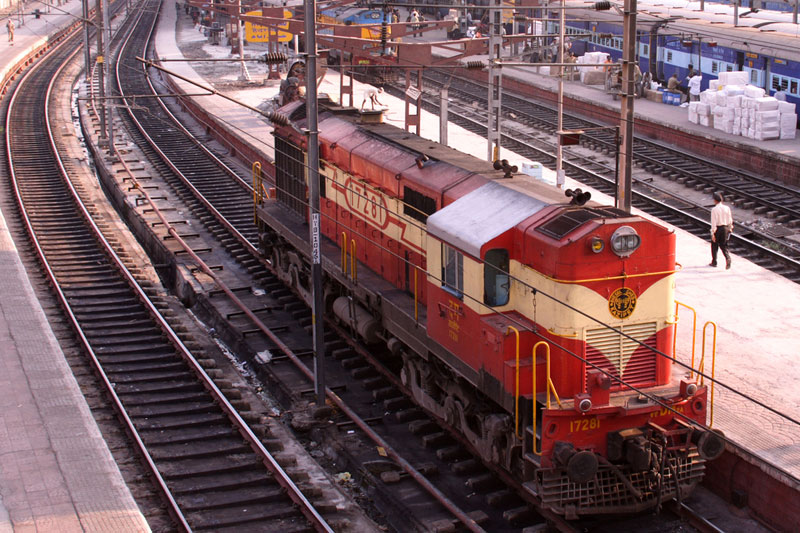(John Kemp is a Reuters market analyst. The views expressed are
his own)
* Rail freight (ton-miles): http://tmsnrt.rs/1GJfz87
* Rail freight (percent chg): http://tmsnrt.rs/1GJfz89
By John Kemp
LONDON, Nov 3 (Reuters) - Freight carried by major U.S.
railroads fell by 7 percent in the second quarter of 2015
compared with the same period in 2014, confirming that large
parts of the industrial economy are in recession.
The major Class 1 railroads carried 431 billion ton-miles of
freight in the three months ending June, down from 463 billion
ton-miles in 2014, according to the U.S. Surface Transportation
Board (http://tmsnrt.rs/1GJfz87).
Changes in freight volumes reflect broader difficulties in
the industrial economy.
Rail operators have been struck by a perfect storm which has
hit both their traditional and new business lines (http://tmsnrt.rs/1GJfz89).
Coal shipments to power plants, the biggest commodity on the
network, accounting for about one-third of total tonnage, have
been hit by a combination of environmental regulations and low
gas prices.
Coal shipments were down by 27 million tonnes, around 15
percent, in the second quarter compared with same 2014 period.
Petroleum shipments, one of the fastest growing sources of
new business during the oil boom, fell more than 650,000 tonnes,
5 percent, as production began to peak and new pipelines
diverted crude from the rails.
And shipments of sand and gravel, a key ingredient in
fracking, plunged by more than 2 million tonnes, nearly 14
percent, as the number of new wells drilled and fracked tumbled.
Shipments of a range of other items from chemicals to
fertilisers and other industrial supplies were also lower as the
industrial economy ran into stiff headwinds from a stronger
dollar and sluggish capital spending.
INDUSTRIAL SLOWDOWN
The slowdown in industrial-related freight has continued
into the second half of the year according to data from a range
of other sources.
Total traffic on U.S. railroads in the 42 weeks ending on
Oct. 24 was down 1.3 percent compared with 2014, according to
weekly carload statistics published by the Association of
American Railroads (AAR).
Shipments of intermodal shipping containers, which mostly
handle manufactured products, were up 2.2 percent but shipments
using box cars, tank cars, hoppers and gondolas, which handle
farm and industrial products, were down 4.5 percent.
Shipments were down in five of the 10 freight categories
including coal (10 percent), forest products (3 percent),
metallic ores and minerals (10 percent), nonmetallic minerals (2
percent) and petroleum (7 percent).
The downturn has deepened and spread to more sectors as the
year has progressed, according to AAR data.
The number of cars carrying coal is down 10 percent so far
this year but almost 13 percent in the most recent week.
The number of cars carrying petroleum and petroleum products
is down 7 percent year-to-date but almost 22 percent in the most
recent week.
VOLUMES FALL ON ALL RAILROADS
In its third quarter earnings presentation on Oct. 22, Union
Pacific UNP.N , the largest publicly owned railroad,
acknowledged freight had shrink in five of six categories during
the quarter compared with 2014.
Union Pacific (N:UNP) carried lower volumes of farm products (3
percent), chemicals (3 percent), containers (4 percent),
industrial products (12 percent) and coal (15 percent). The only
sector to increase was automotive (5 percent).
Other publicly owned railroads all reported falling volumes
during the third quarter compared with 2014.
Norfolk Southern (N:NSC) NSC.N blamed a "decline in metals and
construction traffic due to softer steel production" and
reported a 16 percent in coal volumes.
Kansas City Southern (N:KSU) KSU.N reported that its volumes were
down 2 percent including a 24 percent decline in frac sand.
CSX (N:CSX) CSX.N reported volumes fell 3 percent including a 15
percent drop in metals traffic and an 18 percent drop in coal.
INDUSTRIAL PRODUCTION FLAT
According to the U.S. Federal Reserve, total industrial
output was 0.4 percent higher in September 2015 than September
2014.
But while production of consumer goods was up 2.6 percent
and business equipment 1.8 percent, industrial supplies were up
just 0.2 percent and production of raw materials was actually
down 0.2 percent.
The struggling industrial economy explains some of the
weakness in demand for distillate fuel oil compared with
gasoline this year in the United States.
Two-thirds of diesel is consumed by vehicles, mostly heavy
trucks, on the highways, with another 5 percent on farms, 6
percent on railroads and around 4 percent in construction.
But the expansion of the consumer-facing economy, coupled
with employment gains and cheap fuel prices, has pushed gasoline
demand to its highest since 2007.
(Editing by David Evans)
